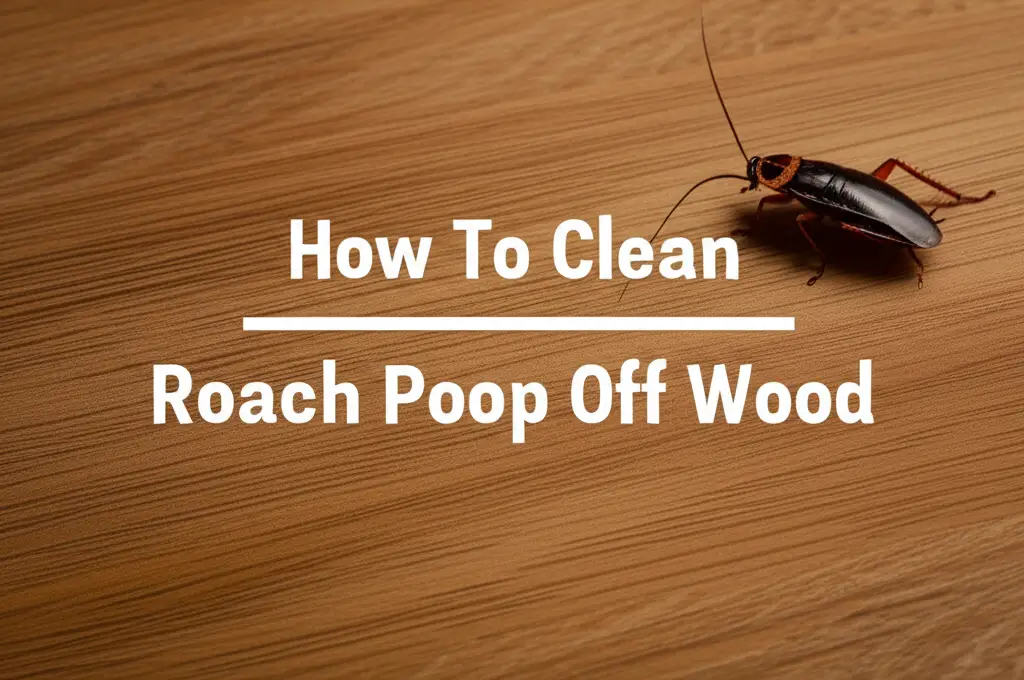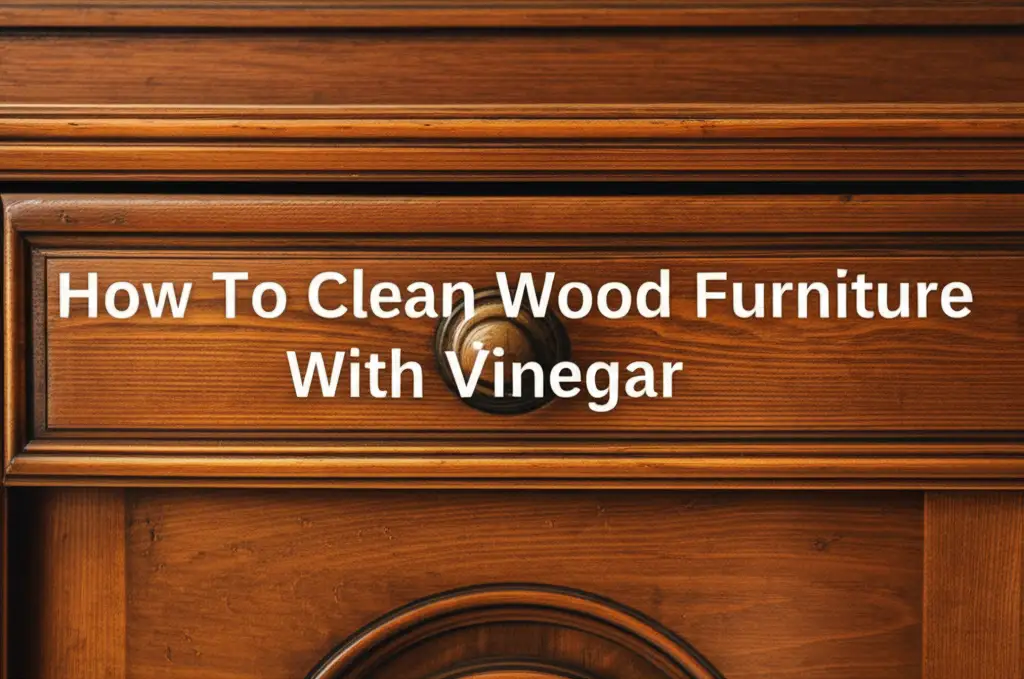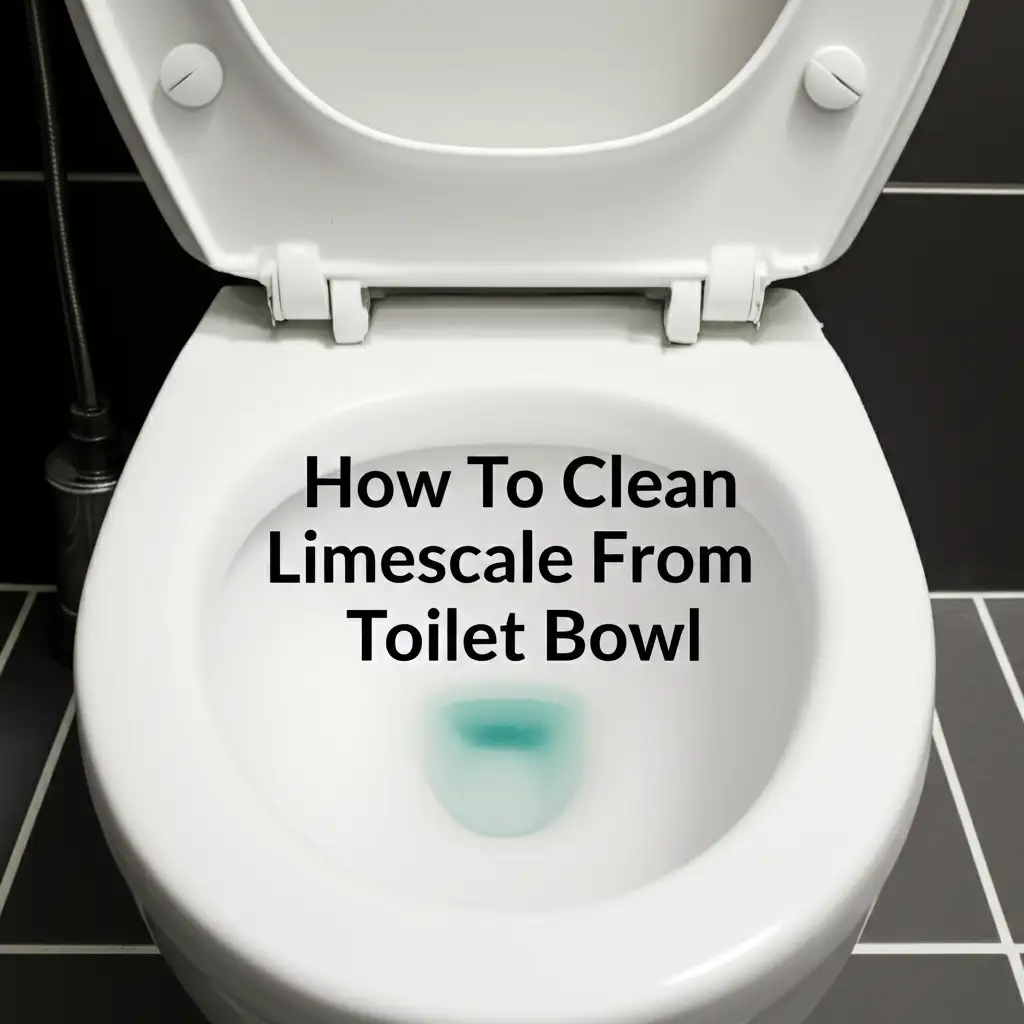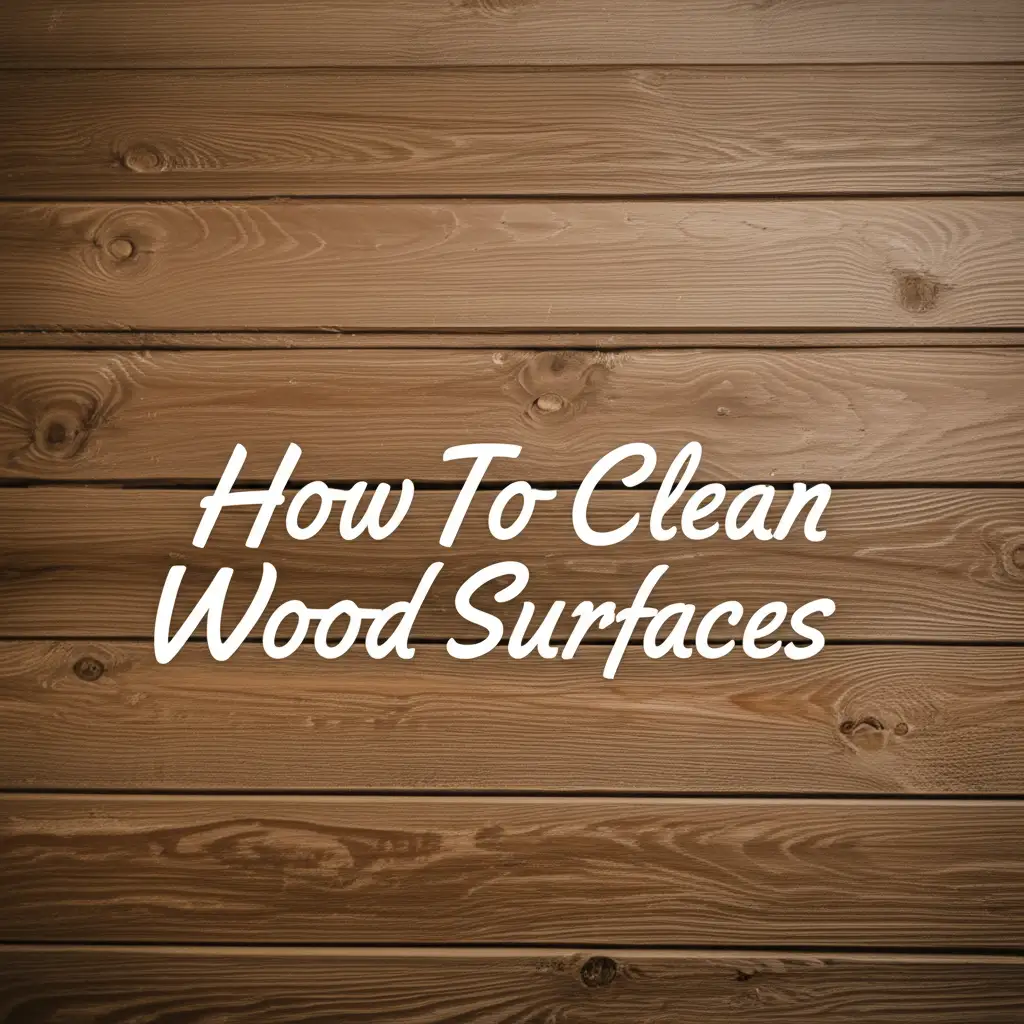· Home Cleaning · 16 min read
How To Clean Roach Poop Off Wood

Effective Ways to Clean Roach Poop Off Wood Surfaces
Finding cockroach droppings on your beautiful wood surfaces is upsetting. These small, dark specks are not just unsightly. They also signal a pest problem. Roach poop can damage wood over time. It can also pose health risks to your family. You need to clean roach poop off wood surfaces quickly and safely. This guide will help you. We will cover identification, cleaning methods, and prevention tips.
Roaches leave behind tiny fecal matter. This looks like coffee grounds or black pepper. Sometimes, they leave smear marks. These marks look like dark streaks. They often appear along baseboards or inside cabinets. Cleaning these areas needs care. We want to protect your wood. We will share step-by-step instructions. You will learn to clean roach poop off wood floors and furniture. We will also discuss preventing future issues.
Takeaway
- Identify Correctly: Recognize roach droppings to start cleaning.
- Prioritize Safety: Wear gloves and a mask during cleanup.
- Gentle Cleaning: Use mild solutions to protect wood finishes.
- Remove Stains: Address dark spots from old droppings.
- Disinfect Thoroughly: Kill germs left behind by roaches.
- Prevent Future Issues: Seal entry points and maintain hygiene.
To clean roach poop off wood, first wear protective gear. Then, vacuum loose debris. Use a damp cloth with a mild cleaner like vinegar or dish soap solution. Gently wipe the affected areas. Rinse the wood surface lightly. Dry it completely to prevent moisture damage.
Understanding Roach Poop: Identification and Risks
You see small, dark spots on your wood. They might be roach droppings. These droppings can look like coffee grounds. Sometimes, they resemble black pepper. Their shape can be cylindrical. The size depends on the roach species. Smaller roaches leave smaller droppings. Larger roaches leave bigger ones. Finding these spots means roaches are nearby. They are often found near food sources. You might see them in cabinets or on shelves.
Roach poop can cause health problems. It carries bacteria and pathogens. These can trigger asthma attacks. They can also cause allergic reactions. Children are especially vulnerable. The droppings also contain allergens. These allergens spread through the air. You can breathe them in. This makes air quality poor. Cleaning safely prevents these issues.
Beyond health, roach poop damages wood. The droppings are acidic. Over time, they can stain wood. They leave dark spots. These stains penetrate the wood grain. They are hard to remove. You need to act fast when you spot them. Old stains are more difficult. They might need stronger cleaning agents. Be careful not to harm your wood finish.
Roach droppings also attract more roaches. They release pheromones. These chemicals signal other roaches. They tell them this is a good place to live. A dirty environment invites pests. Cleaning up quickly stops this signal. It makes your home less appealing to roaches. Maintaining cleanliness is key. It helps to keep roaches away.
Essential Tools and Safety Gear for Cleaning Roach Poop
Before you start cleaning, gather your supplies. You need specific tools. This makes the job easier and safer. First, get a vacuum cleaner. A handheld vacuum is good for small areas. Use a crevice attachment for tight spots. You also need paper towels or microfiber cloths. These absorb moisture well. They help avoid spreading germs.
Safety is important when cleaning roach poop. Roaches carry bacteria. Their droppings also contain allergens. Always wear rubber gloves. These protect your hands. They stop skin contact with contaminants. Use a dust mask or respirator. This prevents you from breathing in airborne particles. These particles can cause health issues. Open windows for good ventilation. Fresh air helps dissipate odors. It also reduces airborne particles.
For cleaning solutions, choose wisely. A mild dish soap works well. Mix it with warm water. White vinegar is another good option. Vinegar helps kill bacteria. It also neutralizes odors. You can mix equal parts vinegar and water. For tough stains, you might need stronger cleaners. Hydrogen peroxide can help. Test any new cleaner in a hidden spot first. This checks for discoloration or damage.
Consider specialized wood cleaners. Some products are made for wood. They clean without damaging the finish. Check the product label. Ensure it is safe for your wood type. Do not use harsh chemicals like bleach directly on wood. Bleach can strip finishes. It can also cause discoloration. A soft-bristle brush can help with textured wood. It gets into grooves. This removes hidden particles. Always have a separate bucket for clean water. This is for rinsing your cloths.
Step-by-Step Guide to Clean Roach Poop Off Wood Floors
Cleaning roach poop off wood floors needs a careful approach. You want to remove the mess. You also want to protect your floor. Start by preparing the area. Move any furniture. Clear the floor completely. This gives you full access. It also prevents dirt from spreading.
1. Vacuum Loose Droppings First: Do not wipe the droppings immediately. Wiping dry poop can spread allergens. It can also grind the poop into the wood. Use a vacuum cleaner. A hose attachment works best. Gently vacuum all visible droppings. Be thorough in corners and under edges. Dispose of the vacuum bag or empty the canister outside. This contains the contaminants.
2. Prepare a Gentle Cleaning Solution: Mix a mild cleaning solution. For most wood floors, white vinegar and water work well. Combine equal parts white vinegar and warm water in a spray bottle. You can also add a few drops of mild dish soap to warm water. This solution is effective. It is also safe for many wood finishes. For delicate wood floors, test a small, hidden area first. This prevents damage. For advice on cleaning wood floors with vinegar, you can refer to our guide on how to clean wood floors with vinegar.
3. Apply and Gently Wipe the Surface: Lightly spray the cleaning solution onto a microfiber cloth. Do not spray directly onto the wood floor. Excess moisture harms wood. Wipe the affected areas gently. Use light pressure. Work in small sections. Change your cloth frequently. This prevents spreading contaminants. For tougher spots, let the solution sit for a minute. Then wipe again. This helps lift the residue.
4. Rinse with Clean Water and Dry Thoroughly: After cleaning, rinse the area. Dampen a clean cloth with plain water. Wipe the cleaned sections. This removes any cleaning solution residue. Residue can attract dirt. It can also dull your finish. Immediately dry the floor. Use a clean, dry microfiber cloth. Air dry is not enough. Moisture causes wood damage. It can lead to warping or mold. Ensure the wood is completely dry. This step is crucial for wood preservation. For information on cleaning older wood floors without sanding, check out our article on how to clean old wood floors without sanding.
Cleaning Roach Poop From Wood Furniture and Delicate Surfaces
Wood furniture often has intricate designs. It can also be very old. Cleaning roach poop from these surfaces needs extra care. You want to remove the mess. You must also protect the finish. Delicate wood, like antiques, requires a very gentle touch. Rough cleaning can cause permanent damage.
1. Assess the Wood Type and Finish: First, identify your wood type. Is it a finished wood or unfinished? Is it antique furniture? Different finishes react differently to cleaners. Lacquered or varnished wood is more resistant. Oiled or waxed wood needs gentle, specific cleaners. Antique wood may have a delicate patina. Always test your cleaning solution. Choose an inconspicuous spot. This could be the back or underside of the furniture. Wait a few minutes. Check for any discoloration or damage.
2. Use Specific Cleaning Agents for Furniture: For most wood furniture, a mild solution works best. Mix warm water with a few drops of dish soap. You can also use a wood-specific cleaner. Look for products designed for furniture. These often contain emollients. They help protect the wood. Avoid harsh chemicals. Do not use abrasive scrubbers. They will scratch the finish. For specific advice on cleaning mold from wood furniture, which shares similar delicate cleaning principles, see our guide on how to clean mold off of wood furniture. If you are dealing with antique furniture, extra care is needed. Our guide on how to clean mildew off antique wood furniture can provide relevant tips for gentle cleaning.
3. Gently Wipe and Polish: Dampen a soft cloth with your chosen cleaner. Wring out excess liquid. The cloth should be barely damp. Gently wipe the areas with roach droppings. Work in the direction of the wood grain. This helps lift the dirt. It also prevents scratching. For crevices, use a cotton swab. Dip it in the solution. Carefully clean tight spaces. Do not saturate the wood.
After cleaning, use a second, clean, damp cloth. Wipe the area to remove residue. Then, immediately dry the wood. Use a dry, soft cloth. Buff the surface gently. This restores shine. It also ensures no moisture remains. For furniture with a protective wax or oil finish, reapply it. This keeps the wood conditioned. It protects against future damage. Proper care extends the life of your furniture.
Dealing with Stubborn Roach Stains on Wood: Advanced Methods
Sometimes, roach droppings leave dark stains. These are difficult to remove. They often sink into the wood grain. Standard cleaning methods may not work. You need stronger solutions. These methods require careful application. They can affect your wood finish.
1. Hydrogen Peroxide for Lightening Stains: Hydrogen peroxide is a mild bleaching agent. It can lighten dark stains. Mix equal parts 3% hydrogen peroxide and water. Apply this solution to a cotton ball. Gently dab the stain. Do not rub vigorously. Let it sit for a few minutes. Check the stain’s progress. Rinse the area with a damp cloth. Dry immediately. This method works best on light-colored wood. It may slightly lighten the surrounding wood. Test in an hidden area first.
2. Using Baking Soda Paste for Tougher Stains: Baking soda is a gentle abrasive. It can lift stubborn stains. Mix baking soda with a small amount of water. Create a thick paste. Apply the paste directly to the roach stain. Let it sit for 15-20 minutes. The paste will draw out the stain. Gently wipe the paste away with a damp cloth. Rinse the area. Dry the wood thoroughly. This method is effective. It is also safer than harsh chemicals. For more ideas on cleaning with baking soda, you can consult our article on how to clean with vinegar and baking soda.
3. Commercial Wood Stain Removers: If natural methods fail, consider commercial products. Many products remove stains from wood. Look for “wood stain removers.” Read the instructions carefully. Some products are very strong. They may remove the wood finish. Always test a small, hidden spot first. Follow the product’s directions precisely. Apply with a clean cloth. Wipe off as directed. Immediately dry the area. Reapply finish if necessary. Some stains, like those from mold or cat urine, also require targeted solutions; for severe cases, articles like how to clean black mold off wood or how to clean cat urine from wood floor might offer similar stain removal principles.
4. Sanding as a Last Resort: For very deep, persistent stains, sanding might be the only option. This is a drastic step. It removes a layer of wood. You will need to refinish the area. Sanding should be done carefully. Use fine-grit sandpaper. Sand only the stained area. Feather the edges. This blends the repair. After sanding, clean the dust. Then apply a new wood finish. This could be varnish, oil, or wax. Sanding changes the wood’s appearance. It is a last resort.
Odor Removal and Disinfection After Cleaning Roach Droppings
Cleaning the visible roach poop is just the first step. Roaches leave behind odors. They also leave bacteria. You need to disinfect the wood. You also want to neutralize any lingering smells. This makes your home truly clean. It also prevents new infestations.
1. Disinfecting the Wood Surface: Roaches carry various pathogens. These include E. coli and Salmonella. They can cause food poisoning. Disinfecting kills these germs. After cleaning, use a disinfectant. A diluted bleach solution works on some wood. Mix one tablespoon of bleach per gallon of water. Use a very lightly dampened cloth. Wipe the surface. Do not saturate the wood. Bleach can damage finishes. Test it first. A safer option is a commercial disinfectant. Look for products safe for wood. Many contain quaternary ammonium compounds. These effectively kill bacteria and viruses. Spray lightly onto a cloth. Wipe the cleaned areas.
2. Neutralizing Lingering Odors: Roach infestations leave a distinct, musty odor. This smell comes from their droppings. It also comes from their bodies. You must neutralize this odor. Do not just mask it. White vinegar is excellent for odor neutralization. After disinfecting, wipe the wood with a cloth dampened with undiluted white vinegar. Let it air dry. The vinegar smell will dissipate. It takes the roach odor with it. Baking soda also absorbs odors. Sprinkle a thin layer of baking soda. Let it sit for several hours. Then vacuum it up. For persistent odors, repeat the process.
3. Airing Out the Area: Ventilation is key to odor removal. Open windows and doors. Use fans to circulate air. This helps to remove stale air. It brings in fresh air. Good airflow helps dissipate any remaining odors. It also helps the wood dry completely. Ensure the area gets plenty of fresh air for a few hours. This step makes a big difference.
4. Post-Cleaning Hygiene: After cleaning, wash your hands thoroughly. Wash any cleaning cloths you used. Use hot water and detergent. If cloths are disposable, throw them away. This prevents spreading germs. Regular cleaning of your home helps. It removes food crumbs. It also eliminates moisture sources. This keeps your home less attractive to roaches. Maintaining hygiene is crucial for long-term pest control.
Preventing Future Roach Infestations and Wood Damage
Cleaning roach poop is reactive. Preventing future infestations is proactive. You want to make your home unwelcome to roaches. This protects your wood. It also protects your health. A clean home is the first line of defense.
1. Seal Entry Points: Roaches enter homes through small cracks. Check for gaps around pipes. Look for holes in walls. Seal these openings. Use caulk for small cracks. Use steel wool for larger holes. Pay attention to baseboards. Check around windows and doors. Ensure they seal tightly. This blocks their access points. Roaches cannot enter your home if there are no holes.
2. Eliminate Food and Water Sources: Roaches need food and water to survive. Do not leave food out. Store food in airtight containers. Clean up crumbs immediately. Wipe down counters after meals. Do not leave dirty dishes in the sink. Fix leaky pipes and faucets. Roaches are attracted to moisture. Empty pet water bowls at night. Remove standing water sources. This makes your home less hospitable.
3. Maintain Cleanliness and Declutter: A clean home deters roaches. Sweep and vacuum regularly. Pay attention to hidden areas. Clean under appliances. Mop floors often. Declutter your home. Roaches hide in clutter. Old newspapers, cardboard boxes, and piles of clothes provide shelter. Remove unnecessary items. Keep closets organized. This eliminates hiding spots.
4. Regular Inspection and Monitoring: Inspect your home regularly. Look for signs of roaches. Check behind appliances. Examine inside cabinets. Use sticky traps. Place them in suspected areas. These traps catch roaches. They also show you where the problem is. Early detection helps. You can address small infestations quickly.
5. Professional Pest Control: If the infestation is severe, hire a professional. Pest control experts have tools and knowledge. They can identify the roach species. They can apply targeted treatments. This ensures complete eradication. Regular professional treatments can provide ongoing protection. This is especially true for persistent problems. Combining professional help with your cleaning efforts works best. It keeps your wood surfaces and home free from roaches.
FAQ Section
Q1: How do I identify roach poop on wood surfaces? Roach poop looks like small, dark specks. They can resemble coffee grounds, black pepper, or dark cylindrical pellets. The size varies based on the roach. You might also see dark, streaky smear marks. These are often found along baseboards or inside cabinets. Look for them near food sources or water.
Q2: Is roach poop dangerous to touch or clean? Yes, roach poop can be dangerous. It carries bacteria like Salmonella and E. coli. It also contains allergens. These can trigger asthma and allergies. Always wear gloves and a mask when cleaning. Ensure good ventilation in the area. This prevents health risks from airborne particles.
Q3: Can roach poop permanently stain wood? Yes, roach poop can permanently stain wood. The droppings are acidic. They can penetrate wood grain over time. This leaves dark spots. Old stains are harder to remove. Act quickly when you see them. Gentle cleaning methods may not work on old stains. You might need stronger solutions or even light sanding.
Q4: What natural cleaners are safe for wood to remove roach droppings? White vinegar and mild dish soap are safe natural cleaners. Mix equal parts white vinegar and warm water. Or, add a few drops of dish soap to warm water. Apply with a damp cloth. Always test a small, hidden area first. These solutions clean effectively. They also help neutralize odors without harming most wood finishes.
Q5: How do I prevent roaches from returning to my wood surfaces? To prevent roaches, eliminate their food and water sources. Store food in sealed containers. Fix leaky pipes. Seal all entry points into your home. Use caulk for cracks. Maintain a clean and clutter-free environment. Regular cleaning removes crumbs and hiding spots. Consider professional pest control for persistent issues.
Q6: What if the roach droppings are on antique or delicate wood furniture? For delicate or antique wood, use extreme caution. First, test any cleaner in an inconspicuous spot. Use a very mild solution like diluted dish soap. Dampen a soft cloth or cotton swab. Gently wipe the affected area. Do not saturate the wood. Dry immediately with a clean, soft cloth. Reapply wax or oil if needed.
Conclusion
Cleaning roach poop off wood surfaces is a vital step. It makes your home healthier. It also protects your valuable wood. You have learned how to identify these droppings. You now know the risks they pose. We have covered safe and effective cleaning methods. From simple wiping to tackling stubborn stains, you have the knowledge. You also know how to disinfect and remove odors.
Remember to prioritize safety. Always wear gloves and a mask. Use gentle cleaners on your wood. Test new products in a hidden spot. Your wood surfaces will look clean again. More importantly, your home will be safer. Take proactive steps to prevent future infestations. Seal cracks and eliminate food sources. Maintain a clean home environment. Your efforts will result in a healthier, roach-free living space. Act today to protect your home and family. Keep your wood surfaces beautiful and clean.
- roach poop
- wood cleaning
- cockroach droppings
- wood stains
- home sanitation
- natural cleaning
- floor cleaning




